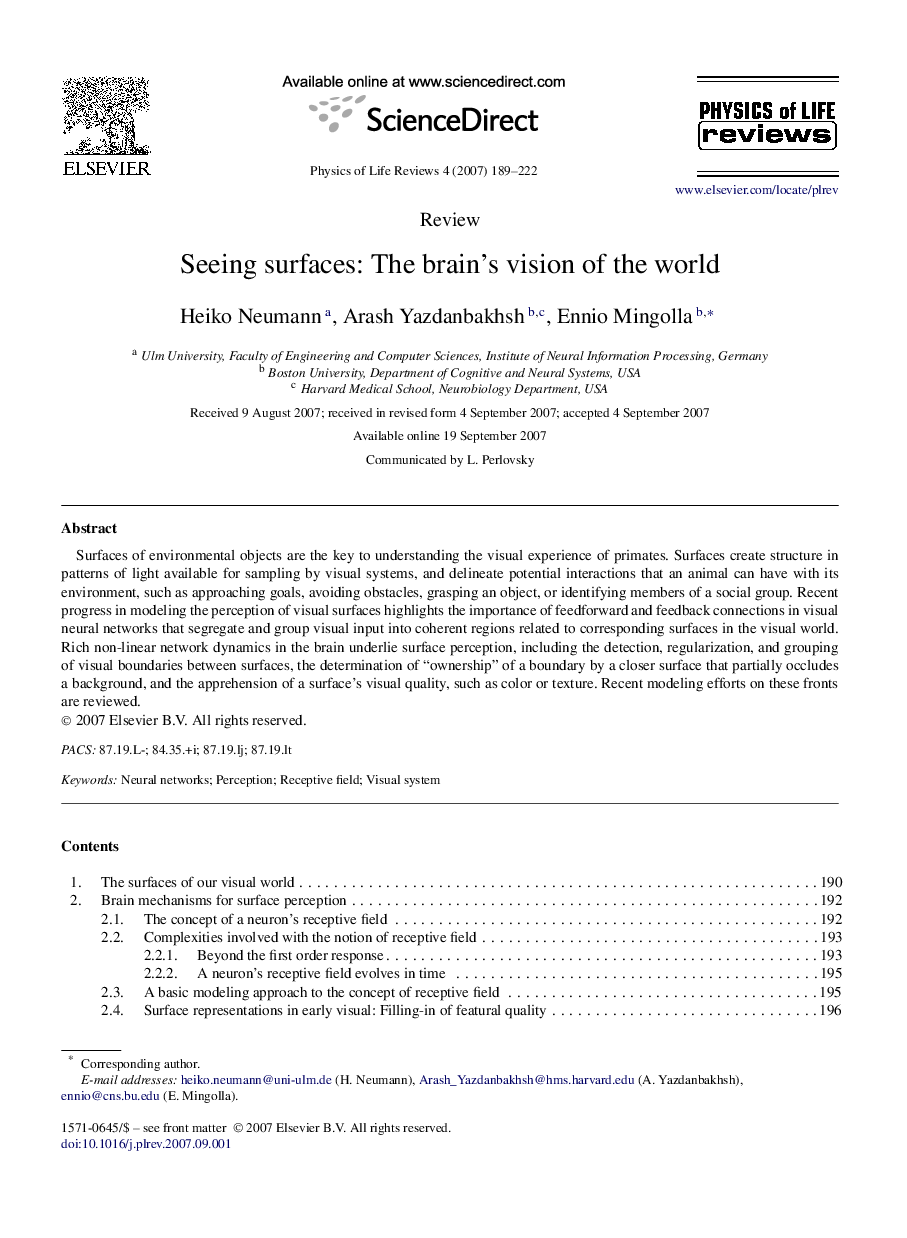| Article ID | Journal | Published Year | Pages | File Type |
|---|---|---|---|---|
| 1874327 | Physics of Life Reviews | 2007 | 34 Pages |
Surfaces of environmental objects are the key to understanding the visual experience of primates. Surfaces create structure in patterns of light available for sampling by visual systems, and delineate potential interactions that an animal can have with its environment, such as approaching goals, avoiding obstacles, grasping an object, or identifying members of a social group. Recent progress in modeling the perception of visual surfaces highlights the importance of feedforward and feedback connections in visual neural networks that segregate and group visual input into coherent regions related to corresponding surfaces in the visual world. Rich non-linear network dynamics in the brain underlie surface perception, including the detection, regularization, and grouping of visual boundaries between surfaces, the determination of “ownership” of a boundary by a closer surface that partially occludes a background, and the apprehension of a surface's visual quality, such as color or texture. Recent modeling efforts on these fronts are reviewed.
